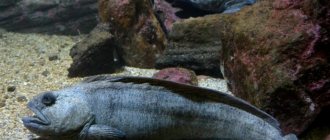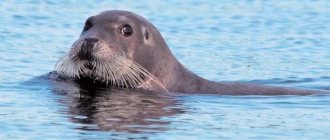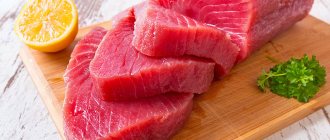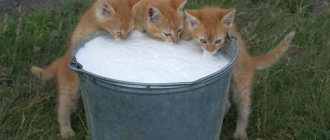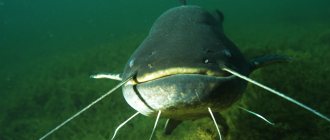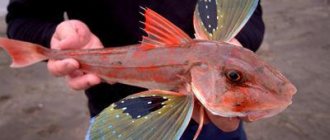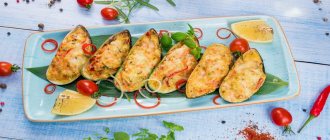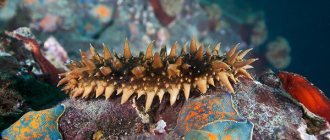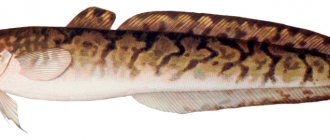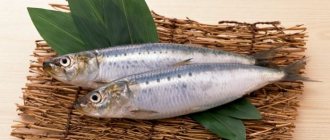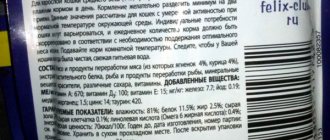Navaga or vakhnya, as fishermen call it, is a pleasant-tasting, inexpensive and at the same time valuable commercial fish. It is called black cod or coal fish. Large individuals reach 50 cm in length, but their weight rarely exceeds 1 kg. Why is vakhnya considered a dietary dish, in what region does the fishery take place and what benefits does it have for the body? These are the questions that are covered in the article.
Production on the Sakhalin Peninsula
Chilled
Freshly caught
Smoked
Dried
Such beauty can be prepared
What kind of fish is this
Navaga is a small, spotted, olive-colored fish. It lives in the cold waters of the Far Eastern and northern regions. There are two types of navaga:
- Northern. Habitat: White, Kara and Barents Seas. Its size does not exceed 30 cm. The meat is more soft and tender. This type of fish was primarily caught for industrial purposes.
- Far Eastern. This fish is larger than the northern one and lives in the Bering, Chukchi, Okhotsk and Japan seas. Another name for this variety is “vahnya”.
In general, these two types are similar in taste. Fish caught in late autumn or winter has the best taste.
Fishing Features
Sports methods of catching navaga include:
- using a donkey in a plumb line;
- I fish with spoons and jigs from the ice.
Navaga is caught from piers or piers. Fishermen often use watercraft. Fishing from regular ice floes is also possible.
Where to find
The fish lives in the Bering, Japanese, Okhotsk, and Chukchi seas. It often ends up at the mouths of rivers that flow into the listed seas. Also found in the North Pacific.
The most promising places for fishing include:
- open water areas, the depth of which is more than 30 meters;
- river mouths and bays;
- coastal deep seas;
- channel edges, which are characterized by moderate flow;
- stone or sand dumps.
Catching navaga with a regular winter fishing rod will be productive if the navaga’s parking place is precisely found
Gear used
Navaga is small in size. Therefore, there are no specific requirements for equipment. To catch this fish, you need a short fishing rod, the length of which does not exceed 50 cm. It must have access rings or equipment for fishing with a nod.
Additionally, you should use the following equipment:
- an inertial winter reel designed for winter fishing - it should include a spool that holds up to 35 meters of fishing line measuring 0.2-0.3 mm;
- base line with a diameter of up to 0.35 mm;
- fluorocarbon leash - its length should be 0.5 meters, diameter 0.15-0.2 mm;
- bait - a spinner, a jig with a replant from a piece of the same navaga.
Fishing tactics
As animal bait, it is worth using whitefish, capelin, smelt, and herring. It is also permissible to use worms and mollusks for this purpose. Among artificial baits, it is recommended to choose jigs or vertical oscillating spoons.
Fishing is easiest in winter. In the summer, it goes deeper into the water area. It is worth considering that fish are weather dependent. It is best to catch it in good weather. In this case, the wind direction or pressure should not change.
Vakhneya is characterized by delicate lips, and therefore it can easily break. She usually bites carefully, so it’s easy to miss the moment of biting. All movements when catching navaga must be careful. It is not recommended to make any sudden jerks.
To achieve good results, you need to lower the bait to the bottom and wait. Then move the bottom a little and make a short toss with a further pause. Usually navaga takes at the very bottom, so it’s worth animating the bait in this horizon.
Spinner for vertical trolling of navaga
Lure
To feed a flock of wahni, it is recommended to use pieces of fish and mussels. Crushed worms are an excellent option. In this case, it is better to feed the bait to the very bottom, using a special feeder.
Nutritional value and calorie content of navaga
The calorie content of navaga per 100 g depends on the type of processing. Let's look at the most common cooking methods.
| Proteins, g | Fats, g | Carbohydrates, g | Energy value, kcal | |
| For a couple | 16,1 | 1,0 | 0 | 73 |
| Fried, with added flour | 10 | 3,8 | 3,6 | 88 |
| Boiled | 14,8 | 0,95 | 0 | 68 |
| Under the marinade | 12,2 | 6,6 | 9 | 136 |
| Stewed with onions and carrots | 12,5 | 0,8 | 1,5 | 62 |
| Baked | 16 | 0,9 | 0 | 73 |
We recommend reading: The benefits and harms of leeks
Why is navaga useful?
Navaga has many beneficial properties for the body, including:
- Maintaining the immune system and nervous system, which is ensured by the presence of selenium in the composition.
- Prevention of cell aging thanks to vitamin E.
- Strengthening the skeletal system, which vitamin D helps with.
- Ensuring healthy skin and visual acuity with vitamin A.
- A beneficial effect on cholesterol metabolism and fat synthesis, which is provided by unsaturated fatty acids in the liver of navaga.
- Increasing resistance to stress, improving brain function and normalizing sleep patterns.
- Of particular importance is folic acid, which helps in the formation of red blood cells.
Now let’s look at what specific diseases may be indications for using the product.
For what diseases is navaga fish useful?
It is recommended to eat fish for the following pathologies:
- Hypertension and other cardiovascular problems. Omega-3 fatty acids in meat are useful for proper heart function, stabilizing blood pressure and heart rate.
- Thyroid dysfunction, which vitamin D and iodine help normalize.
- Navaga has a beneficial effect on the children's body, preventing rickets.
- Fatty acids also help prevent cancer: kidney, liver, colon, breast and prostate cancer.
- Regular use of the product improves mental health, smoothing out the symptoms of depression, bipolar disorder and other disorders.
We recommend reading: What foods are good for the human heart and blood vessels: list, top 15 best
Is navaga good for pregnant and lactating women?
The benefits of navaga have also been proven for the body of pregnant women. The product contains docasahexaenoic acid. It is useful for the development of the brain, visual apparatus and central nervous system of the unborn child. Doctors recommend that pregnant and lactating women consume up to 200 mg of this acid per day.
Fish is also useful when there is a threat of miscarriage - regular consumption of it helps maintain pregnancy. Selenium, iron and iodine at the cellular level protect the fetus from environmental harm. Eating fish during pregnancy will help prevent postpartum anemia. In the first month of lactation, it is advisable to avoid the product to avoid a possible allergic reaction.
Spawning
The vakhna reaches sexual maturity at 3 years of age. In summer, the fish go to a depth of 40-60 meters, and with the onset of cold weather, schools head to the shores for the purpose of reproduction. Sometimes it enters the mouths of rivers and lakes that communicate with the seas.
For spawning, navaga requires areas with strong ebbs and flows. Rocky and pebble soil types are best suited for this. Sometimes she chooses a sandy bottom. In this case, the fish attaches eggs to underwater objects.
Interesting to know! Navaga begins to spawn in the first half of December and ends at the end of February. During this period, temperatures drop to -2 degrees.
Like other representatives of Cod fish, navaga is very prolific. During the season, she lays 25-200 thousand eggs. The fry appear in April. Most of the small fish are eaten by predators. At the same time, the fry use different methods of shelter from natural enemies.
Consumption of navaga during a diet
Navaga does not contain fat, so when properly prepared it can be called a dietary dish. On a diet, it is better to boil or steam it. It goes well with fresh or stewed vegetables.
Fish will help satisfy your hunger without loading your body with extra calories. A large amount of protein will help strengthen muscles, so this fish is especially useful for regular strength training.
Bony or not
Judging by consumer reviews voiced on various culinary forums, there are almost no small bones in the flesh of this fish.
The backbone and flexible cartilaginous bones are easily separated from the carcass after heat treatment. This feature allows the use of fish in baby food as a source of easily digestible proteins. Due to the absence of small bones, navaga fillets can be used to prepare minced fish for cutlets or quenelles.
How to cook delicious navaga
There are many ways to prepare a dish that differ in complexity and taste. Let's look at some of them:
- One of the most delicious and common dishes is fried fish. In order for the navaga to retain its juiciness and tenderness, it must be removed from the stove a couple of minutes before it is ready - the fish will finish cooking in a hot frying pan. When frying, many harmful carcinogens are formed, so it is better not to overuse fried fish.
- Navaga stewed in sour cream turns out tender and tasty. For a thick consistency, you can add a little flour to the sour cream. Sautéed onions and carrots will add a special taste to the dish.
- Ear soup will be beneficial for digestion. To keep the meat firm, you need to cook it over low heat.
- Cutlets are also made from navaga. To add juiciness to the dish, it is recommended to mix minced fish with breadcrumbs, which absorb and retain moisture.
- The most useful cooking method, suitable for diet and healthy eating, is boiling or steaming. To make the fish tastier, you can add your favorite spices when cooking, and sprinkle with herbs when serving.
This fish is suitable for lunch or dinner. It goes well with potatoes, rice, and fresh vegetable salads.
Characteristic
The first study of northern navaga by biologists was in the White Sea back in the 1920s. At that time, 174 specimens were analyzed in the Mezen Bay, but the project was closed and returned to it only in the late 1950s. Despite the accumulated data, many questions about the biology of this species, as well as its abundance, population dynamics and sustainability of harvest levels are still unclear. What kind of fish is navaga - a small representative of cod fish, with a minimum number of bones, a long body, and yellowish fins. All characteristics can be studied before purchase in the photo.
Yandex.Pictures
Far Eastern
Far Eastern navaga is an important component of some Arctic shelf seas, primarily found in the Russian Arctic. There are now long-term changes in the biological parameters of some navaga populations, as well as the current state of the stock. In recent decades, the size and age structure of populations have undergone significant changes. In the Onega and Dvina bays there was a significant rejuvenation of the population. But aging was observed in the Mezen Bay, which was associated with climate changes in all areas of the White Sea. Catches of navaga have remained at a stable level for more than 100 years, which indicates the good condition of the stocks of this species. In the photo, this fish may not differ from others living in another area with a different climate. However, the Far Eastern one will always be a little larger than the others. Before purchasing for dinner, you can read the reviews.
Yandex.Pictures
Navaga Eleginus nawaga is an Arctic coastal species in the cod family. Found near the White and Barents Seas. There are at least six populations in these areas. The most studied one is in the White Sea, while published information about other parts of the species’ range is sketchy and fragmentary. What kind of fish is navaga - interest arose during the period of development of navigation, when only hake and herring were present on the shelves, which became boring for citizens.
Due to the similarity of environmental conditions, the biological characteristics of navaga in the Onega and Dvina bays are similar, but differ from those in the Mezen Bay. Fish live up to 9 years, and in the Mezen Bay up to 11. The bulk of the populations in the Onega and Dvina Bays had a total length of 17–28 cm at the age of 2–4 years. In the catches, individuals up to 40 cm in length and up to 9 years of age were observed. The maximum age and length were observed in river fish living in the Mezen-Kaninsky region - 13 years and 43 cm, much depends on what it feeds on.
The length and weight of river cod fluctuate from year to year due to changes in growth rates associated with fluctuations in temperature and abundance. The length and weight of different age groups change synchronously due to the relatively short life cycle and high interannual variability in abundance.
How to choose and store navaga correctly
When choosing fish, it is important to focus on the following recommendations:
- You should not take a product that already has too much ice on it. This means that the fish has been frozen and thawed multiple times.
- The belly of fresh fish should be white. A yellowish tint indicates the beginning of the oxidative process of fats.
- The eyes of a quality fish should not be cloudy.
- High-quality meat from gutted fish is white, but not grayish.
It is advisable to prepare the fresh product immediately without freezing. However, if this is not possible, then it can be stored at a temperature no higher than –18 °C. Once you have thawed the fish, you should not refreeze it.
